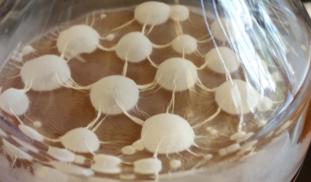Please wait...
About This Project
Mixed cultures create sour beers, but many brewers don't know which microbes are in their cultures. We will identify the species in 21 or more samples from pro/homebrewers using deep sequencing. We will also combine the cultures and follow the evolution of that population over the course of fermentation to determine which species are dominant. This work will highlight the similarities and differences between souring cultures, guiding the development of custom cultures for sour beer production.






